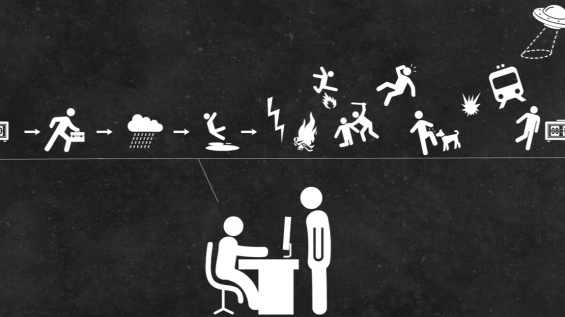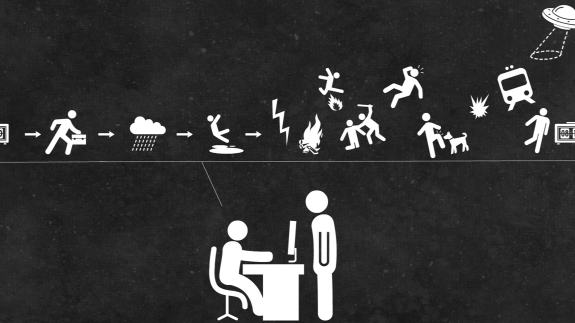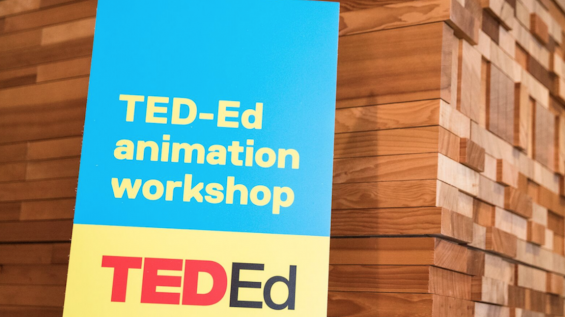
How to create digital learning portfolios in the classroom
It’s hard to talk about “Digital Learning Portfolios” without really knowing what they are. At the Dreamyard Project, a collaboration between the Bronx’s Dreamyard Preparatory School and the Parsons New School of Design, the illustration below is what we think it is, and what we all agree that a digital portfolio should be: interactive, in progress, multidisciplinary and easily sharable. As our implementation of Digital Learning Portfolios (DLPs) is a work in progress, I would like to provide you all with a step-by-step guide to roll this out in your classrooms or in your schools. Read on to learn how.
Developing a “Digital Learning Portfolio” culture at your school is a big undertaking. In order to prepare, one should understand a few key things that will help make these portfolios a success:
-
Teach students about organization: Your students need to be master file organizers. For the sake of my school, I strive to teach Google Drive to every single student in our school. Having your students familiarize themselves with Drive opens the doors for teachers to now use Drive in their lessons without having to go over it again and again.
-
Start out with a uniform filing procedure: Time and thought needs to be put into a uniform file system for the class so that all students are organizing in similar ways. Once students get comfortable with their file management skills, they can be taught to develop their own file systems.
-
Have accountability: Students must be held accountable for their Drives or their online space. Every student is to be held accountable for logging and typing every notable piece of content as dictated by the teacher of that class.
Creating the perfect DLP does not happen overnight. It is a constant work in progress. Whether you are rolling out DLPs in a classroom or with an entire school, these four steps are the essential components to getting started:
Step 1: Content, Content, Content
Have your students create as much content as possible before publishing. Teachers should emphasize the importance of developing “DLP-worthy” writing (which is discussed more in the next point below). So as to not change your daily instructional routines, teachers should feel free to keep giving the prompts you have always given in classes. But this time, each piece of writing will be put in a folder that will hold virtually all of students’ DLP worthy materials.
During the past year of trying to do this at Dreamyard, I’ve found that teaching the digital skills necessary for publishing and sharing is much easier when students have pre-typed content available to publish. For instance, this includes teaching kids how to use the platform of choice, or showing students how to embed videos and link to other resources. These are skills that cannot be taught during class time, as it takes away from the content time.
Step 2: Identify Mastery
Let’s focus on that “DLP-worthy” piece for a second.
Assuming your students have been creating relevant “DLP-worthy” content, teachers and students should work toward identifying two or three pieces of work that show student mastery in a given topic or unit.
Depending on the population of students you are working with, you may need to inform your students which writing piece they should include in their portfolio. The more students work on these portfolios over time, the more readily they’ll recognize DLP-worthy writing. The goal is to get students to understand what mastery looks like and to differentiate between something that is DLP-worthy and something that is not.
Step 3: Content Enhancement and Multiple Entry Points
Once students have identified their best samples, they should focus on enhancing them. By “enhancing,” I mean students revisit their best work and begin to include links, tag keywords, and find videos and images that further explain what they are trying to say. It has been my experience that oftentimes, students can explain things to other students in ways that adults cannot. So, when a student curates a piece of writing with multiple videos and tools to help explain the topic, other students can benefit from that individual’s learning experience. Students frequently find resources in places that teachers would have never looked. This gives us, teachers, a chance to explore the minds of our learners even as it allows them a space to put their individual learning experience up for others to interact with.
Think about this: if a teacher does this with 50 students (assuming all 50 students do this assignment), the teacher now has 50 different approaches to teaching and explaining a given topic.
Step 4: Publish and Feedback
Once content has been reviewed, and once DLP-worthy samples have been identified and enhanced with visuals and other resources, it is time for students to publish, and to give and receive peer feedback. The goal of this step is to create a culture of academic discourse — a virtual space where students can speak about their work in a way that captures their growth over time.
By following the steps above, not only will you begin to build a library of student content that will grow over time, but you will also have something that your kids can edit and enhance when it is time to show them how to publish their work. When the time comes for students to create an actual portfolio, ideally as they approach their last year in school, they will have a historical database of content and work to choose from.
I hope to hear from all of you. and if you try out these steps, let me know how it goes! Oh, and yes, we have more: Check out this video, The Learning Portfolio Project, on the Dreamyard School’s experiences with DLPs. Happy portfolio-making!
This article was originally posted on EdSurge.com. How are educators across the United States using video and other technologies in the classroom? To find out, EdSurge assembled the Fifty States Project — an initiative to publish articles by educators in each of the 50 states and US territories over a year, showcasing educators and their stories of supporting learning by using technology. This article is a New York entry by educator Rudy Blanco (@rudyblancs), the Digital Learning Coordinator at The Dreamyard Preparatory School in the Bronx. Curious to learn more? Check out this year’s ongoing project. Interested in representing your state this year? Apply here.




I am trying to do this with my year 6 class as we speak. I have set up google docs for students to publish their work but now want to file their work into a more organised format so each student has a folder of work for me and their peers to access. We are experimenting.would love any ideas. The kids and I are experimenting together. I learn from them.
Hey there Michelle- so glad to hear that you are doing this with your students. Where are you located in the word? Organizing the work can be quite the daunting task- for our school we use Google Classroom as a way for us to automatically organize things. If this does not work and the portfolios you are making are for multiple classes then the best bet is to have a file structure laid out by subjects or projects. google Drive is also a solid tool for this.
A sample file structure that one of my students use is: Portfolio–>Academics–>science–>labs OR Academics–>English–>Essays
The structure can vary based on your goals. Can you tell me a little more about the work they are publishing?